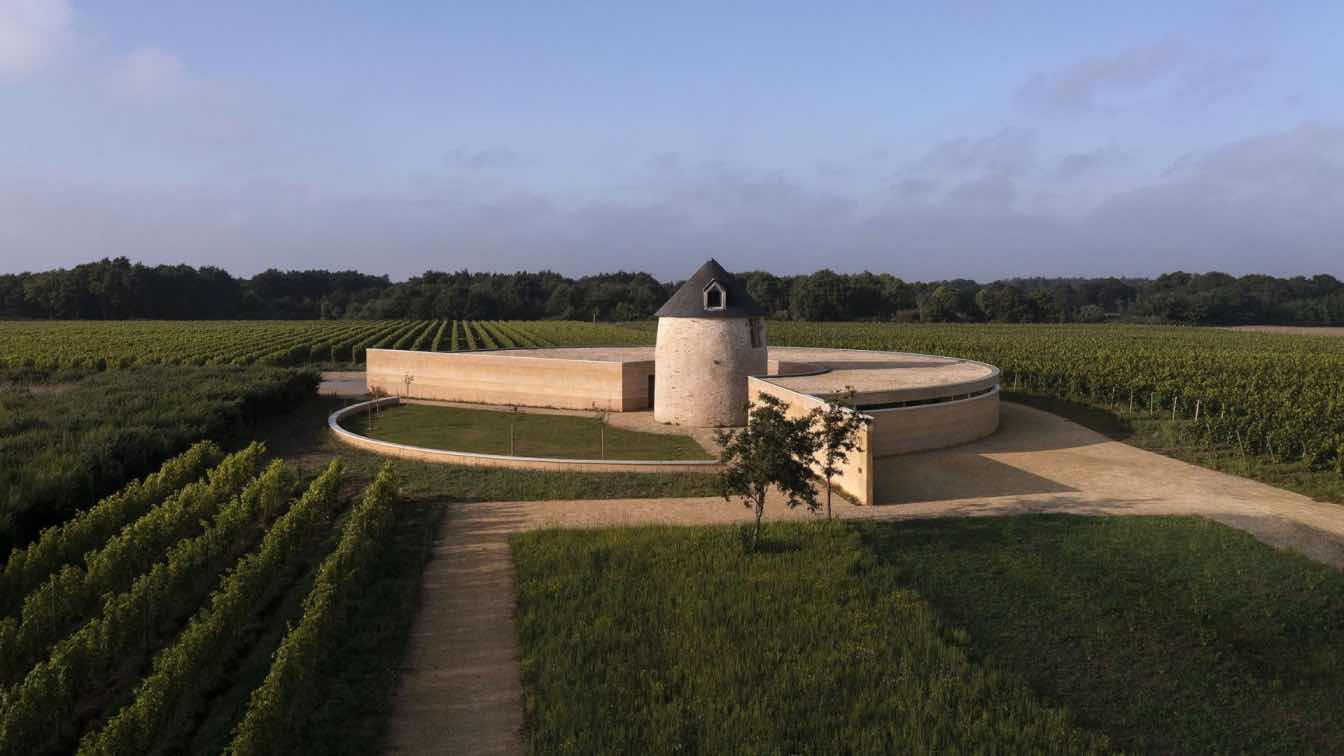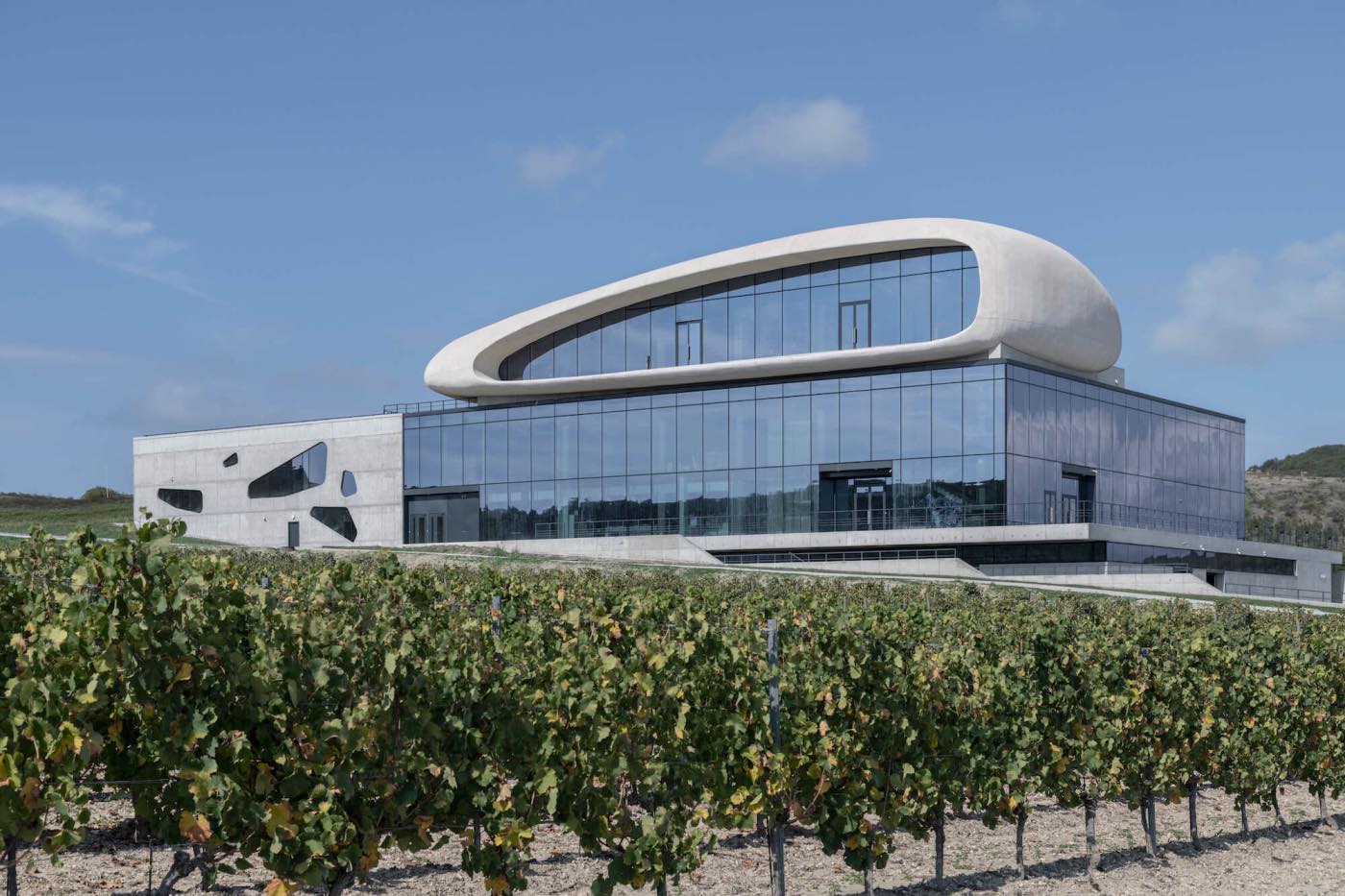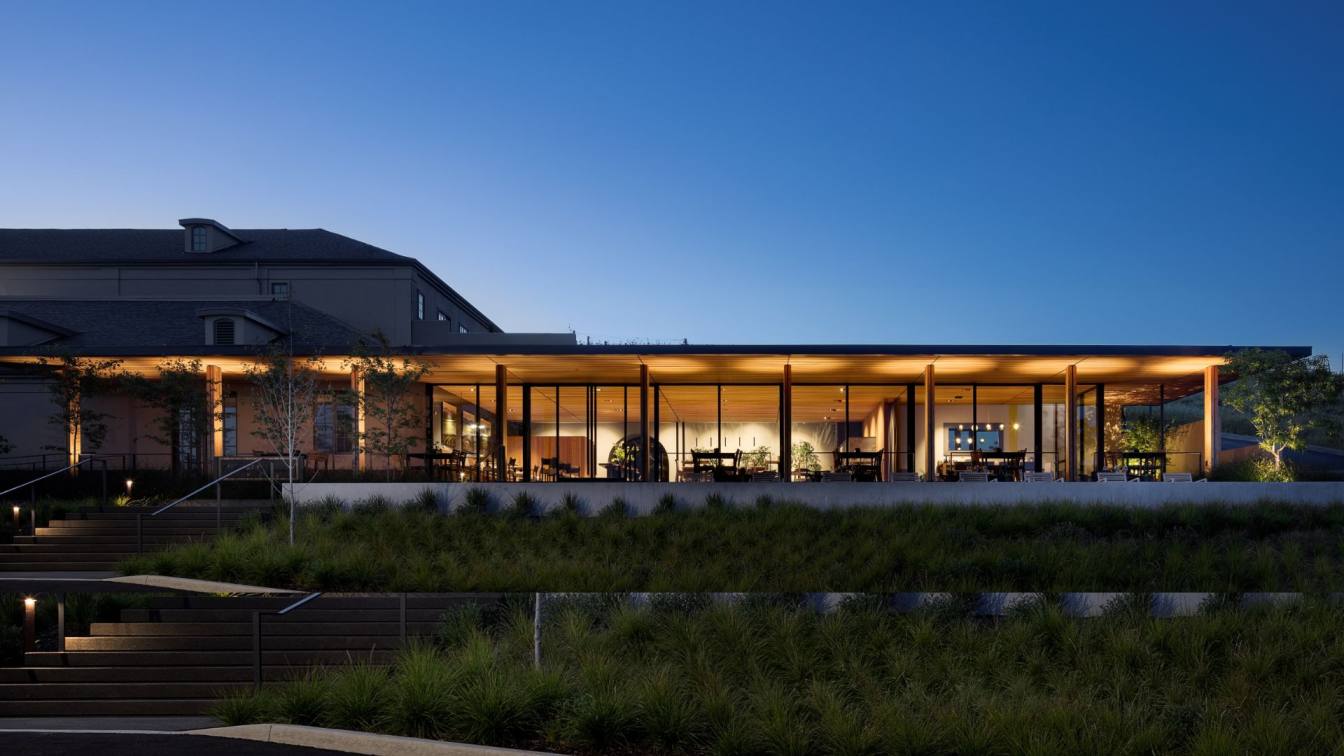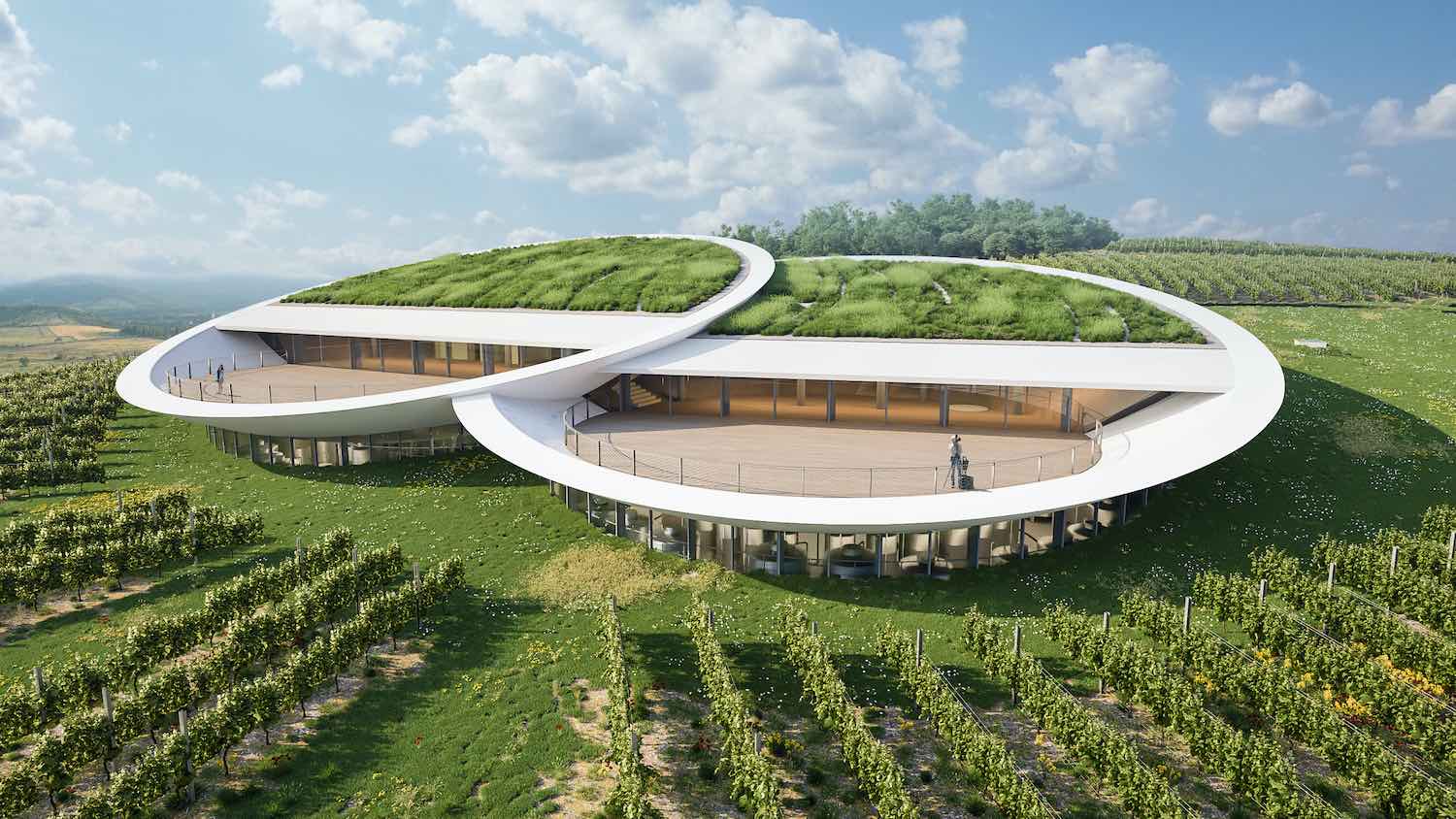Atelier Štěpán: Pálava barn with ancient overlays
Winery Přátelé Pavlova (Friends of Pavlov) is located in a vineyard on the gentle north-eastern slope of the Pálava hills with a stunning view of the river Dyje valley and the Novomlýnské reservoirs. The landscape influences it. The building is horizontal, calm, flowing, like the surrounding vineyards. It blends in with the landscape, not drawing unnecessary attention to itself. At the same time, it is very rational in structure, inspired by the construction of simple barns. It uses a minimum of building materials and the possibility of building with local resources. It has the structure of the surrounding vineyards, their sun and shade.
"I designed the winery after my stay in the Mediterranean; it reflects the Mediterranean culture and sun. And it is a logical connection because the Romans once established vineyards in Pálava. Pavlov and wine are one and the same."
The building has been designed utilising natural influences (shading, roof overhangs, predominance of natural ventilation, material articulation, embedding in the terrain, water retention), complemented by a source of heat and cold. One could say in a rustic-ecological way, that is, considering the correlation between modern technologies and old principles.

"Once, on an inspection day, while removing the building’s concrete pillars’ formwork, I noticed a connection between the pillars’ archetypal expression and the silhouette of Děvičky Castle on the neighbouring hill. This connection was a powerful experience for me, enriched furthermore by the passion of the winery’s builder Pavel Konečný (Bystroň Group). The inspection days were refreshing in such a beautiful place and with the aforementioned context."
It is certainly worth mentioning that the building is located in the Protected Landscape Area and is built in accordance with its conditions and requirements. As a result, it is partly embedded in the ground and its roof takes on the slope of the terrain. The rational construction is based on a 6x6 meter module. Material-wise, it is divided into a load-bearing part – concrete, and a non-load-bearing part – wooden, horizontal and vertical. The tectonics of the building is inspired by ancient architrave and entablature. Pillars made of cast concrete with limestone admixture support a wooden roof made of perpendicularly stacked elements. The higher up, the more subtle the elements become. The roof itself is vegetated to blend in with the landscape in distant views.
"There is beautiful traditional architecture in Pavlova. Contemporary and modern architecture has only come to Pavlov in recent years, for example in the form of the archaeopark or this winery."
At a time when spectacular wineries are being built, this one instead turns to naturalness and straightforwardness. Visitors are given one tasting room with a view of the castle and the water. Everything else is used for wine production and storage.




































About studio
Atelier Štěpán is an author's studio whose modern architecture grows on conservative roots. It was founded in 1997 by Vanda and Marek Štěpán. Since the beginning it´s been dealing with architecture, public space and art, and developing archetypal concept of architecture. It is rooted intellectually in Moravian and Austrian region. Their work is especially known for sacral architecture. This has been recognized several times, proved by the several important awards that it has received. Among best known is the Church of Beatified Restituta in Brno Lesná (2020) with a magical rainbow dome, the Church of Holy Spirit in Ostrava (2007) with geometry based on basic shapes, the Church of Holy Spirit in Šumná (2008) as a reference to early Christian buildings, the round shaped Church of St Wenceslas or the area for the Mass of Pope Benedict XVI in Brno (2009).
Atelier Štěpán currently carries out civil, residential and experimental buildings. This year, the Winery Přátelé Pavlova project in Pavlov was completed, and the Conceptual Cloud installation for the Museum of Applied Arts in Brno is nearing completion. Recently, the studio was working on the concept of minimalist residential units Freedomky or the refurbishment of Café Fara in Klentnice. Marek Štěpán was an external consultant for architecture for the head of the Office of the President of the Republic during the years 2006-2012. He is currently head of Sacral Space Laboratory and vice-dean of Faculty of Architecture, Brno University of Technology. Atelier Štěpán has won significant awards (for instance The 10 Best Buildings of 2017 – Azure Magazine).





